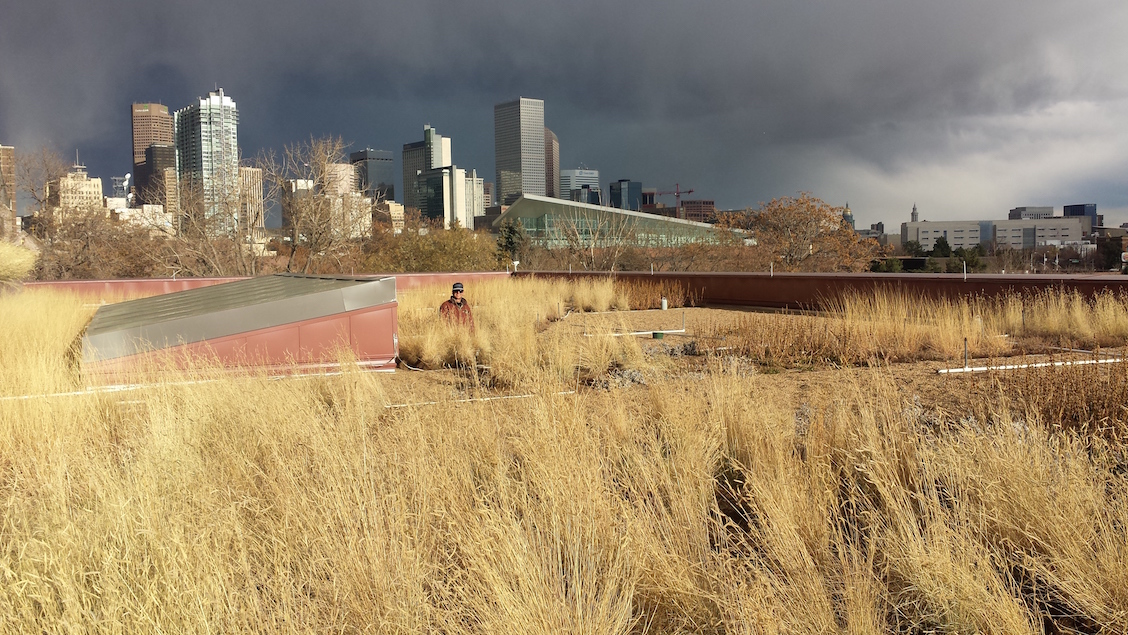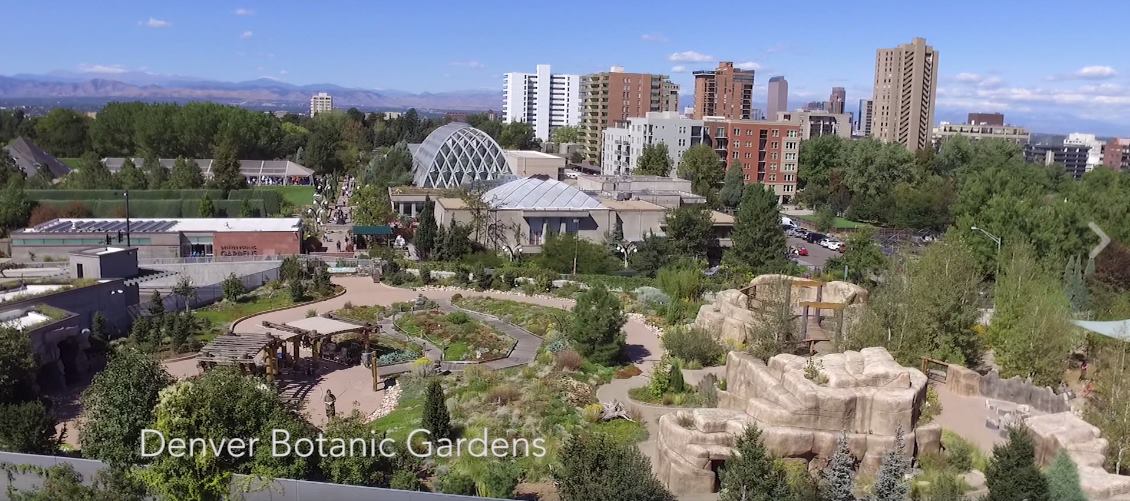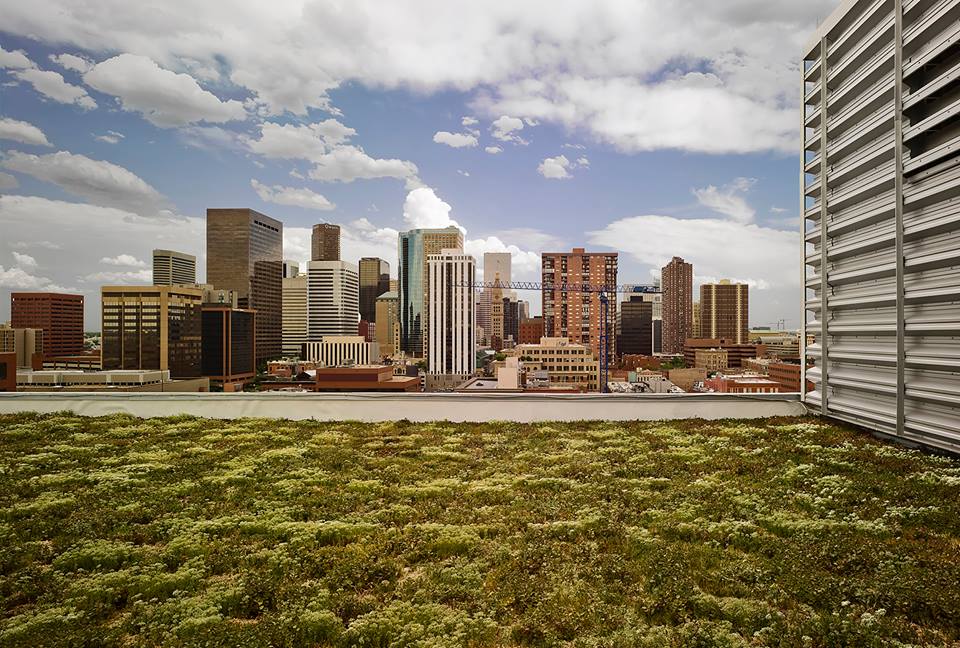Denver is only getting more crowded. That’s something nearly everyone agrees on, locals and transplants alike. The crowding is contributing to a lot of issues — like major traffic delays at any time of day and rampant development. The city and its residents will suffer in the future from the consequences of these overcrowding stressors without active mitigation. Denver is a great place to live, but what happens if temperatures rise to three digits on a regular basis in the summer? It would be a result of the urban heat island effect — a statistic that Denver ranks third worst in the nation for — and it’s because Denver is situated in an extremely dry climate where traditional city surfaces multiply the heat and aridity.
That’s one of the issues the citizen-formed coalition I-300 tackled with the drafting of the Green Roof Initiative, which garnered enough support to make it onto the ballot for November. The initiative, if approved by voters, will require any developments started in 2018 over 25,000 square feet to include a green roof with solar energy collection. According to I-300 and organizations such as Denver’s Green Party and the Colorado Native Plant Society, these mandated green roofs will improve air quality, reduce the urban heat island effect, create sanctuaries and handle stormwater drainage better than traditional roofs. Some developers are pushing back against the initiative because it will increase their building expenses, possibly hinder affordable housing development and some groups want to keep decisions about construction away from government regulations. Here’s what you need to know about this initiative before voting.

What is a green roof?
A green roof is a flat surface that has a combination of solar panels and vegetation or just vegetation. There are very specific codes that must be adhered to when building a green roof, but the most successful ones require very little maintenance once constructed. There is a spectrum of green roofs, from a few inches of ground cover (think of the moss-covered roofs of Seattle), to a fully accessible seating area or garden.

With vegetation, green roofs are consistently and considerably cooler than current roofs, both for the surface temperature outside and the spaces beneath the roof inside. The insulation that vegetation provides for a building can significantly lower energy demands, both in heating and cooling. Another benefit of more vegetation on roofs in a city is the creation of small sanctuaries for wildlife like bees, butterflies and birds. They can even be sanctuaries for people who find rejuvenation in nature, even if it’s only a little island within the urban jungle. Green roofs also reduce stormwater runoff by collecting rainwater and using it while also improving air quality by scrubbing excess carbon dioxide.
The idea of implementing laws or mandates for green roofs is not a new idea, and San Francisco is leading the United States with the implementation of its Better Roofs Ordinance, requiring new construction to have 15 to 30 percent of its roof made into solar or “living roof” space. Germany requires green roofs in varying degrees as well.
Will it work in Denver?
Denver is not the ideal place to grow vegetation. Plants need more water than what is available in the summer and also have to deal with frosts and snow for more than half the year. But green roofs don’t have to be gardens or farms, though they can be given the right circumstances. Instead, the roofs can include more native species than the typical front yard in Denver does, all of which are accustomed to infrequent waterings and incessant sun.
There are a few examples of green roofs already existing in Denver, which may provide the best information for people on the fence with this initiative. It’s important to note that all of these examples are commercial buildings, though green roofs on residential buildings are also possible and manageable.

Denver Botanic Gardens: Retrofitted in 2007 onto a 1950s structure, this green roof is used as a research plot for all other green roofs in Denver. Researchers look into which plants die without frequent irrigation and which ones are the best for the Denver’s climate. The cost of this retrofit, for the vegetation components, was $12.75 per square foot.
Denver Public Library: A new addition constructed in 2008, and not open to the public unless rented, this green roof has external planters with native species of grasses and other vegetation. All of the planters are watered with sub-surface drip irrigation systems. The estimated cost of the green roof aspect of this 860-square-foot construction was $40,000.
Denver Justice Center: Installed in 2009 as a new addition, this 7,500-square-foot rooftop is a continuous mat of plants, all sitting at under six inches. At a cost of $19.35 per square foot, this type of green roof is cost-effective for its benefits.
Will it raise taxes or rent?
When it comes to taxes, no, it will not raise taxes. The Green Roof Initiative is all about putting responsibility in the hands of developers and building owners. This is a pivotal aspect of the initiative because the massive amount of development currently happening in Denver. Instead of developers coming, building and leaving, they must contribute to the future of the city and its wellbeing. All expenses for constructing a green roof will become a capital expenditure for the business or residence.
As far as raising rent, the answer is more complicated. Green roofs will lower energy costs, residential building owners may choose to raise or lower rents based on their savings. In that same vein, green roofs have the tendency to raise property value, and may contribute to more inflation in the Denver housing market. Old buildings that would eventually need to retrofit their roofs to be green may need to raise rents in order to account for the expense. Though, as noted before, the energy savings may then help the renters.
Why are people against it?
The opposition to the Green Roof Initiative is mostly composed of groups that have vested interests in construction and development, like the Associated General Contractors of Colorado, the Colorado Association of Mechanical and Plumbing Contractors’ Opportunity Fund and the Denver Metropolitan Commercial Association of Realtors. These groups raised more money than the grassroots campaign that wrote the initiative in order to create advertisements against it.
Mayor Hancock is opposed to the initiative as well. The Mayor’s office explained their stance to 303 Magazine, by saying that while they applaud the efforts and the values of the initiative, they ultimately believe it is not the right approach.
“While green roofs support many sustainability objectives, Initiative 300 is not the right approach for Denver. It goes too far too fast and provides no flexibility or opportunity for ‘carrots’ instead of ‘sticks.’ By taking a mandate-only approach and eliminating the opportunity for options, the initiative would actually hinder efforts to pilot, promote, phase and incentivize green infrastructure, as is being done in many of our peer cities across the United States. We also are very concerned about cost increases to construct and maintain priority projects such as affordable housing, the legality of several parts of the ordinance, and conflicts with existing city building codes. We would have much preferred to see a collaborative approach, which has become the hallmark of how we solve problems here in Denver.”
According to the Mayor’s office, there are “programs already in place to improve energy efficiency in buildings, expand electric vehicle use, reduce vehicle emissions, produce more renewable energy at city facilities and purchase more for city buildings, and increase recycling and composting citywide.”
Much like the mayor’s office opponents to the initiative have also raised questions about the cost of installing and maintaining a green roof, and how that might have an impact on low-income housing options and other affordable housing in the city.
It will be interesting to see if citizens want to have mandated change, or if they prefer to leave that decision to the free market. One thing is for certain though, enough people in Denver support this initiative to put it on the ballot.
For full text of the initiative, visit this page.






I truly liked this article, it really is awesome. I might have a suggestion though, but Im not causing a debate :p Anyway, keep up the nice work, and til later! Regards, Teeninga Palmen
The roof of our office building was built into a small garden, which is really good. The view is great, ideal for chatting and drinking coffee.
Good article with an excellent way of presentation. Keep it up. Thanks for sharing.
This is a good energy saving for Denver. Thanks for this interesting article.